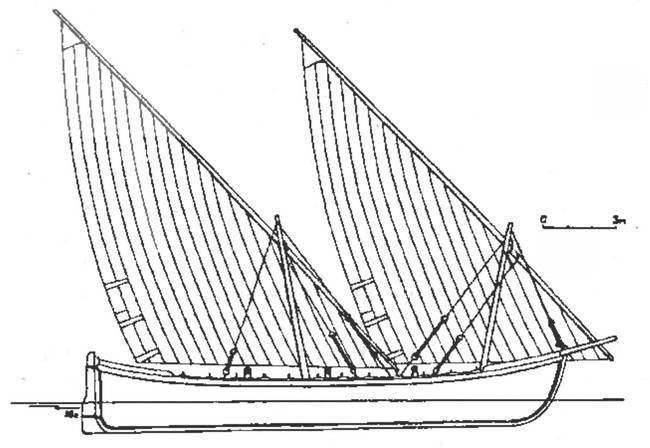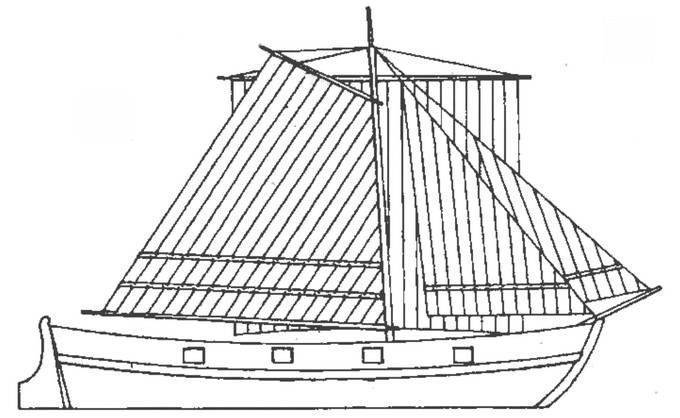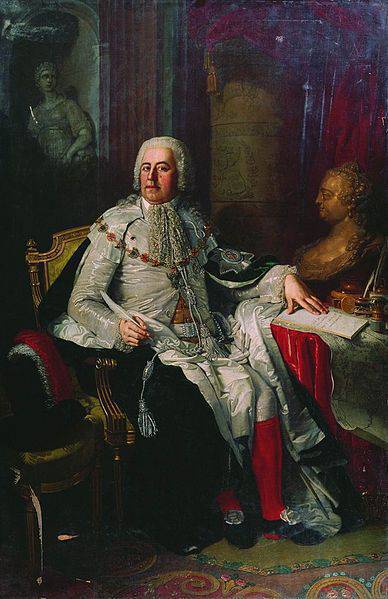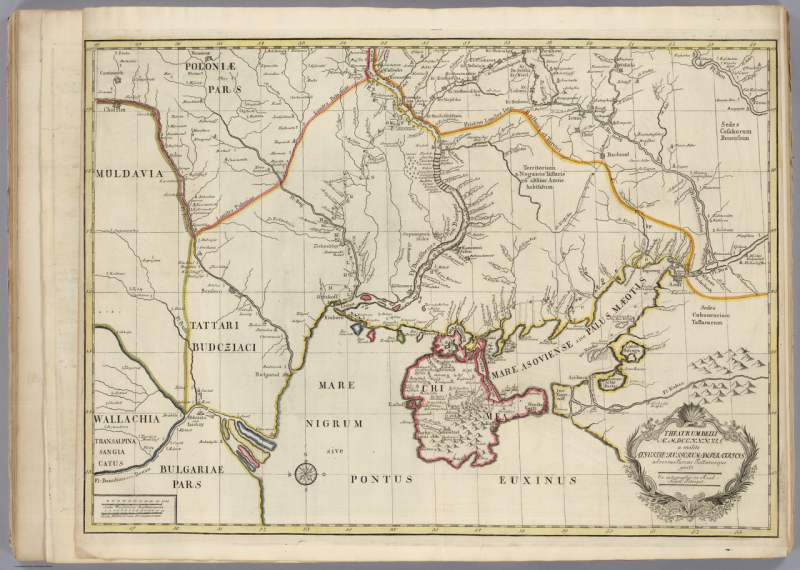Raids of the Crimean Tatars. 1737 Campaign Plan
After the completion of the Crimean campaign, Field Marshal Munnich began work to strengthen the southern borders. Additional forces of the regular army were sent to the Zaporizhian Sich. For this, a detachment was formed in 400 of the infantrymen of the Uglich regiment under the command of Lieutenant Colonel Frideriti. He was accompanied by a military engineer, Count Zevald, who was assigned to supervise the repair of the Sich fortifications.
For the immediate protection of the border, four dragoon regiments (the Ingermanland, Tver, Tobolsk and Archangelogorod), hussar corps and 200 of Little Russian Cossacks were separated from the army. They were joined by: the Perm Dragoon Regiment, which stood in redoubts on the Voronkova River, one cuirassier and two infantry regiments arrived from Poland, two dragoon regiments that came from the Don. All these troops took up positions along the Dnieper. The main strongholds served as: Tsarichanka, Orlik, Perevolochna, Kremenchug and Pereyaslavl. General command of the border forces was entrusted to Lieutenant-General, Count Gustav-Otto Douglas, before his arrival he was commanded by Major General Magnus von Biron. Lieutenant-General Yakov Keith answered abroad from Pereyaslavl to Kiev, and a section of the Ukrainian line, from the Buzovaya fortress to the River Mius, was subordinated to Lieutenant-General Prince Urusov.
Crimean Tatars raids
The breakthrough of the Russian troops behind Perekop made a very strong impression on the Turkish government. Khan Kaplan-Giray in the late summer of 1736 received the order of the Sultan to leave the throne. I must say that the change of khans in the Crimea was commonplace for Istanbul. So, Kaplan-Giray already headed the Khanate three times (1707 — 1708, 1713 — 1715, 1730 — 1736). Khan was at that time already a very old man and suffered from paralysis, so with all his desire he could not personally lead the troops and participate in the battles. However, the Sultan ordered Kaplan-Girey to be exiled to the island of Chios, where he died in 1738.
The new Khan Fetih II Giray at one time distinguished himself in the defense of Ganja during the war with the Persians. Being a brave and experienced military leader, Fetih Giray understood very well that the main task for him was to restore the fighting spirit of the warriors, and for this you need a successful foray. At the end of October, 1736, a large Tatar detachment penetrated the Ukrainian line between the fortresses of St. Michael and Sloboda, crumbled into small “parties” and began to plunder and burn the surrounding villages.
Having learned about the invasion, Prince Urusov, who was in charge of this border area, immediately sent to the fortress of St. Alexis to Major General Rading, Colonel Shtokman, with orders to attack the enemy. Urusov himself began collecting landmilitia, but was unable to gather large forces. In order not to waste time, the Uruses in the evening of December 29 came out from the fortress of St. Paraskeva with a small police unit and Cossacks. Meanwhile, Major General Rading 29 December formed a detachment under the command of Colonel Shtokman (over 400 people) and sent him to the place where the steppe men broke through the line to intercept them on the way back. To support Stockman, a very small (142 warrior) detachment of Colonel Melgunov left the fortress of St. Michael. Having joined, they met the Tatars, burdened with loot, and did not allow them to go beyond the line, but because of the small number they themselves barely restrained the enemy's onslaught. The main forces of the Tatars passed along the line and left for it between the fortresses of Buzovaya and Kiselskaya, after which they rushed to Perekop. In the course of this raid, the Crimean Tatars hijacked many prisoners and livestock, and also captured a large number of various booty. To pursue the enemy Uruses and Rading did not dare because of the lack of strong cavalry.
During the investigation into the circumstances of the raid of the Crimean horde, it turned out that the Tatars were able to “unearth” and “break” the shaft on the line unnoticed and unhindered. Because of this, Urusov was accused of negligence and put on trial, and Lieutenant General Leontyev was appointed to replace him. In order to more quickly respond to such invasions, Minikh ordered the formation of two cavalry "cor de reserve", allocating for this the necessary number of people from the dragoon regiments. The first "Cor-de-reserve" as part of 2 thousand cavalry commanded by Major General V. S. Arakcheev located between the fortresses of St. John and sv. Paraskevs, and the second, in 3, thousands of people under the command of Major General Prince Trubetskoy, in the town of Domontov, between Tsaritsynka and Kiev. Horse reserves were intended to repel enemy raids and were given the right to act without waiting for orders from above, that is, autonomously.
In mid-February 1737, the raid repeated. 40-thousand the Crimean army was headed by Khan himself. Tatar cavalry moved over the Dnieper above Perevolochny, and along the way the horsemen attacked the small detachment of General Yuri Leslie (100 man) and killed him. The general himself was killed, and his son Egor Yuryevich was captured. Then the steppe men tried to attack the Spévalovsky factory, but were repelled. When they left, they themselves were attacked by the Russian cavalry, and then they hurriedly fled, leaving behind booty and prisoners. Minikh was very embarrassed by the raids of the Tatar cavalry for the line, on the device of which they spent so much energy and with which he himself devoted a lot of time. Justifying, the field marshal wrote to the empress: “Countless examples in stories military art shows that no possibility of a border stretched from two and three hundred miles, as from Kiev and from the Dnieper to Azov and the Don, to reach so that an easy enemy breaks into any place, because if there is an army everywhere , then in such a distance it is necessary to crush him greatly. ” Minich also complained about the Cossacks, who too late discovered the movement of the horde.
Map of the theater of operations in the Russian-Turkish war in 1737 year. Compiled by J. N. Delilleus for the Russian Academy of Sciences in 1745
Preparing for the 1737 campaign of the year
The army was hasty recruitment of new recruits, the total number of which reached 40 thousands. However, to reach the state of wartime was very difficult. The commanders of many regiments complained that "by the will of God, there was a great decline in people, they were constantly ceasing." It was even necessary to accept recruits less than “regular growth”, they were sent to the train.
It was not easy to collect horses. Stallmeister of field artillery Apochinin acquired horses for artillery. Dragoon horses were collected throughout the state, except Siberia, one by one with 253 souls. The animals were delivered to special points, from there they were driven to Belgorod, and already from Belgorod they were distributed into parts. In addition to the requisitions, it was decided to buy a part of riding horses from Kalmyks, for which special teams were formed from noblemen, Cossacks and other free philistines who know the Kalmyk language and customs, and also know a lot about horses. By 1 on April, 1736 brought thousands of horses to the army over 16, but this, according to the commanders, was not enough. In addition to horses, the troops needed a large number of oxen to transport goods. In December 1736, Prince Baryatinsky received an order to purchase over 40 thousands of oxen in the Ukraine.
When arming the regiments, special attention was paid to ensure that all the soldiers of each regiment received exactly the same fuseas. Part of the guns was purchased in Saxony, but most were made in Russia at the Tula and Sestroretsky weapons factories. Minikh ordered soldiers of an infantry regiment to remove a sword, rightly noting that an infantryman, "having a fuzea with a bayonet, never defends a sword," as a result, the sword on the march only hinders the soldiers, aggravating their burden. At the same time, Munnich still believed in the effectiveness of pikemen copies against enemy cavalry, and their number in each regiment was doubled. The supply of gunpowder in the shelves was made at the rate of fifty shots per gun. The rest of his quantity was to be carried in the field stores. In addition, to strengthen the defense of carts. Minich ordered to train shooting drivers.
With special attention, the commander approached the supply of artillery to the Dnieper army. The number of guns in the shelves, according to his instructions, doubled. Almost all captured Turkish and spoiled theirs were put into the casting of new tools. In Perevolechna, Izum and Bryansk, numerous gun parks were assembled. The general collection was appointed in Peremovokna, in March 1737 of this campaign before the start of the campaign it was possible to collect the following artillery forces: 18-pounders - 27 units, 12-pounds - 3, 8-pounds - 8, 6-pounds - 2, 3-pounds - 5, 5-pounds mortars - 10, 2-puds - 1, 1-puds - 2, 6-pounder mortars - 12, «small mortirtsev» - 200, 1-forty-pound howitzers - 4, polupudovyh howitzers - 2. All other weapons planned to send later, after the army on the Dnieper. In the Don Army a significant part of the artillery consisted of guns exported from Azov to the fortress of St. Anne.
For each type of guns set a certain rate servants. With the 12-pound and 8-pound cannons, for example, it was supposed to have gunners and fusiliers using the 11. The 3 man was attributed to the 5-pound gun, the 9 man to the big mortar. The artillery was to be transported and repaired by two “furstadt” (artillery wagons). In the Dnieper army, his strength was determined in 2874 people, and in Donskoy - in 3117 people. However, in reality, to form such a vast states failed. Even by mid-May 1737, the number of the Furstadt of the Dnieper Army was 1060 people, that is, less than half the planned one. In the artillery wagon train of the Don Army only 1934 people served. It is clear that such a state of affairs extremely adversely affected the delivery of artillery and resulted in a reduction in the number of guns taken on the march.
Still actively built ships in Tavrov, on the Don. Admiral Bradal diligently sought the best design for ships that were to operate both on the sea and on the river. At the beginning of 1736, he suggested that the Admiralty Colleges build scherberts and "large Cossack boats", since "... galleys and shmaki, beyond the fineness of the fairway in the Sea of Azov, are incapable and cannot pass." However, Vice Admiral Senyavin strongly opposed this proposal. He believed that it was still necessary to build galleys, but to bring them to the mouth of the Don without cargo and then load them with the help of smaller ships. After a lot of controversy, Minich gave the case "to the grace" to Bredal, and the boats began to be constructed. In total, it was decided to build 1737 500 24 rowing boats by March. Some of them were supposed to be used as transports, and some to be armed with three-pound cannons (two per boat). Unfortunately, the organizers of the work immediately faced with objective problems. First of all, there were not enough masters and money. For these reasons, the plan to create a second, additional shipyard, below Tavrov, failed.
Worse than on the Don, things were going on the Dnieper. Nothing was done here in the previous campaign. The attempts undertaken in the summer of 1736 to somehow adapt the ships, the construction of which began even under Peter I, failed. There were not enough masters, workers, materials and money. In addition, when designing ships, it was necessary to take into account the special conditions of the Dnieper with its rapids. Only in April, 1737, thanks to the efforts of Rear Admiral V. Dmitriev-Mamonov, who was specifically directed to the shipyard, the following vessels went from Bryansk to Perevolochnu: from April 22 to 4 in June, the 350 galleys, pram, and dubbing boats were sent. For their crossing over the rapids, special teams of soldiers and Zaporizhzhya Cossacks were formed.
To provide the army with food, the Little Russian and Slobodian Cossacks were levied with an additional, grain tax. So that the grain does not go away "to the side", the Cabinet of Ministers forbade the residents of Little Russia and the cities closest to Little Russia to engage in distillation, in Sevsk, Rylsk, Putivl, Trubchevsk, Orel, Kromakh, Kursk and others. In addition, on the initiative of Lieutenant General Prince Baryatinsky, introduced a temporary ban on the sale of grain abroad. The collected food was placed in special shops located mainly along the Dnieper. However, there were plenty of problems: the storage conditions in them did not always meet the requirements, because of the lack of buildings, some shops were built in old and dilapidated barns, the grain lay right on the floor, rotted under the rains, was plundered.
During the march, the allowance of each regiment was to be made from its store. Minikh also ordered a reserve store with a two-month supply of food for the whole army on the right bank of the Dnieper, near Mishurin Horn. For his completion he was responsible for the general pro-master-lieutenant Roslavlev, who was supposed to collect bread from the Lubensky, Poltava, Kharkov, Nezhensky, Mirgorodsky and Pereyaslavsky shops. However, Roslavlev was only partially able to complete his task, as these stores were not completely full. The transporters from the reserve shop had to, as well as artillery units, catch up with the army already during the march. Munnich attached great importance to the supply of the army, remembering the 1736 campaign, when the main damage to the army was caused not by the enemy, but by diseases partially caused by the lack of food. Regimental commanders were ordered to submit daily statements on the status of food stocks. On the first day after this order, 12 commanders of regiments who had not filed statements were put on trial.
Field Marshal Munnich sent a special request to Kondoidi, the Army Chief Medical Officer, and asked him to prepare proposals for preventing an epidemic. In response, the doctor noted that the basis of health is, above all, "good content in food." Therefore, it is necessary not only to properly feed the healthy, but also to give an enhanced diet to the sick. First of all, soldiers should get enough meat. Here, Kondoidi noted that sometimes it is possible to go on an “honest deception”, and, in the event of a shortage of beef, to give out horse meat, without informing the soldiers about it (the Russians disdain horse). Kondoidi also advised to cook kvass and bake bread for patients in hospitals, to prohibit the issuance of state-owned products to the cooks, as they cook food very poorly and carelessly, often in unhygienic conditions. Before the hike, all the shelves replenished their pharmacies, allocated a special truck for the transport of medicines.


Dubbel-boat. Source: Shirokorad A. The Millennial Battle of Constantinople
Plans of the Russian command
Defining the goals of the 1737 campaign, Minich faced a very difficult choice: to repeat the campaign in the Crimea or launch an attack on the Danube Theater. There were two important reasons for the advance on the Danube. First, in the Balkan sector, the Russian army could interact with the strong Austrian army. Secondly, it was possible to count on the support of the local Christian population, which could expose auxiliary troops and help with supplies.
However, on the other hand, there were strong arguments against the war on the Danube front. Firstly, Vienna still doubted and it was unclear how actively she intends to act in the future. That is, the Russian army could be left without support. Secondly, even with the active participation of Austria in the war, the question of successful cooperation arose. Two allied armies could not quickly unite. Thirdly, the Danube Theater was removed from the Russian supply bases. A Crimean campaign showed the importance of timely supply of the army. Fourthly, during the long rule, the Ottomans created powerful fortresses and strongholds here (Ochakov, Khotin, Brailov, Izmail, and others), the siege and assault of which required tremendous effort and expenditure of resources. Fifthly, attacking in Moldova, the Russian army retained in the rear of the hostile Bujac and Crimean Tatars.
Thus, after weighing all the circumstances, Munnich again decided to act in two directions. The main blow inflicted on Ochakov, and auxiliary - on the Crimean Khanate, again exposing him to fire and sword.
According to the plan of the Russian commander, the troops stationed in Little Russia, were to gather near the mouth of the river Samara, from there move to the river Volpyanka and further to the Stone Backwater, where the Cossacks were waiting for them. From Kamenny Zaton, the troops had to go to Kazi-Kerman (Kyzy-Kerman) and unite there with the Don Cossacks and Kalmyks. From Kazi-Kerman all the infantry regiments were sent to Ochakov, and the whole cavalry was sent to the Crimea. The goods necessary for the army were delivered to Volpyanka by a dry route, then by water. The troops sent to Ochakov should try to seize the fortress immediately. In case of failure, the army had to go to the siege and, at the same time, select a detachment to attack the Tatars at the mouth of the Dniester. The Crimean Army was instructed, having overcome Perekop, to launch an offensive against Karasubazar, Kerch and Kafu, then to go, through Bakhchisarai, to Balaklava and to the mountainous regions of Crimea.
This plan was given to the empire by the empress as early as the fall of 1736. However, his approval slowed down due to the proposals of Austria. In December, thanks to the efforts of Osterman, Emperor Charles VI extremely reluctantly declared war on Porte and asked the Russian Empress Anna Ioannovna to send an officer to Vienna to work out a general plan for the campaign. At the same time, the Austrians continued to pull time - only in December 1736, the two powers signed the convention on joint actions. The proposals of Field Marshal Munnich were transferred to Vienna, from where the remarks of the emperor were sent to Russia. Charles VI offered the Russian army to arrive in Wallachia to join up with Austrian troops. Learning about this proposal, Minich strongly opposed, noting that if the Austrians want to act together, then they themselves need to go to connect with the Russians. In the end, it was decided that in 1737 the armies of Austria and Russia would fight independently, but coordinate the largest operations.
Thus, Russia and Austria in 1737 failed to agree on a common action plan. However, the Russian plan had to be somewhat modified. The offensive was to be carried out not by one army, with the subsequent division into two parts (infantry and cavalry), as planned at the beginning, but by two armies at once: to the Crimea from Azov - by the Lassi army and to Ochakov - by the Munnich army. The decision to divide the troops into two fronts was based on the confidence that the Turkish troops would not cross the Danube because of the war with Austria. Therefore, Minich planned to take Ochakov smaller forces.
The army under the command of Minich included the 3 foot guard battalion, 30 infantry regiments, 21 dragoon regiment, 9 cavalry landmilitation regiments, 7 thousand Don Cossacks, 6 thousand Zaporozhian and 6 thousands of Hetman's cossacks, hussars, husars, martial arts, martial arts, hussmans, hussars, martial arts, martial arts, hussmans, hussars, martial arts, hussmans, hussars, martial art In total, under the leadership of the field marshal there were about 89 thousand people of regular troops and 20 thousand irregular (about 110 thousand people in total). Lassi's army numbered about 40 thousand regular and 15 thousand irregular troops (about 55 thousand). Another 9 thousands stood out for the garrisons of Azov and Bahmut. In April, the Xnumx of Munich began to push troops to Perevolochna, where his headquarters were located. To march on Ochakov army was divided into three divisions.
The first, consisting of nine dragoons and eleven infantry regiments, was commanded by Prince Ludwig-Wilhelm of Hesse-Homburg. The second division, which included eight dragoon and fifteen infantry regiments, was under the command of Lieutenant-General A. I. Rumyantsev. The third division was headed by Lieutenant-General M. I. Leontyev. As a result, the commanders who participated in the 1736 campaign of the year became the two closest assistants to Minikh, and the third was a new, previously not served man.
Alexander Ivanovich Rumyantsev was descended from the ancient family of the Rumyantsevs, participated in the Northern War 1700 — 1721, participated in the most decisive and famous battles and sieges. He was a member of the Prut and Persian campaigns of Peter. Consisted as adjutant of Peter I, executed his assignments and diplomatic missions. So, P. A. Tolstoy helped prince Tsarevich Alexei to Russia, then in 1724-1726. traveled to the Ottoman Empire to decide on the division of the Persian possessions. Then he commanded all Russian troops in the Caspian lands. In 1726, he was awarded the Order of St. Alexander Nevsky, in 1727, promoted to lieutenant-general, in 1730, granted to lieutenant colonel of the Preobrazhensky Life Guards Regiment. However, when Anna Ivanovna fell into disgrace. Having quarreled with the brother of Empress Biron's favorite, the military general brutally beat the Courlander, and then even rudely addressed the Empress herself, responding to the offer to head one of the financial colleges, who did not know how to look for money to pay for fashionable luxury. Anna Ivanovna Rumyantsev for "disobedience" under the court, which sentenced him to death. The Empress, however, replaced the penalty by reference to a remote estate. In 1735, the city of Aleksandr Ivanovich was freed from exile, the Alexander Ribbon was returned to him, appointed Kazan Governor and commander of the troops directed against the rebels of the Bashkirs. While suppressing the uprising, Rumyantsev showed extraordinary energy and determination. Minich noticed this and called Rumyantsev on a new front.
In addition, the Russian command decided to conduct an auxiliary operation against the Kuban Tatars. In November-December, 1736 was organized by the raid of Kalmyks and Don Cossacks on the Kuban Tatars. The Russian command was afraid that the Kuban Tatars would attack the outskirts of Azov and incited Taisha Dunduk-Omo to attack the enemy. The Kalmyk-Cossack army ruined the land from Kuban to the shores of the Sea of Azov for two weeks and even attacked the town of Kopyl, the local ruler Bakhti-Girey. More than thirty thousand Kuban Tatars were killed and about ten thousand women and children captured. Dunduk-Omo received, in addition to captured loot, awards from the Russian government. Subsequently, his descendants laid the foundation for the Russian noble family of Dundukovs.

Russian commander and diplomat Alexander Ivanovich Rumyantsev
To be continued ...

Information